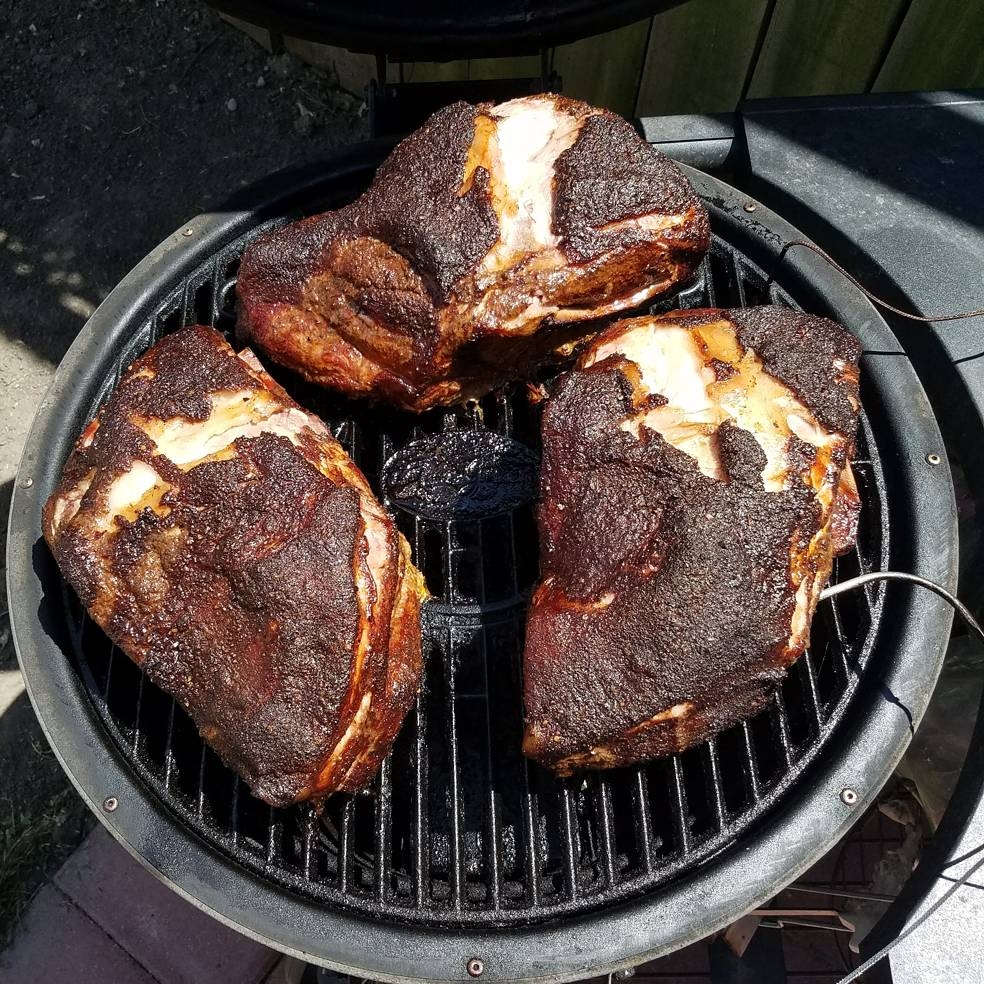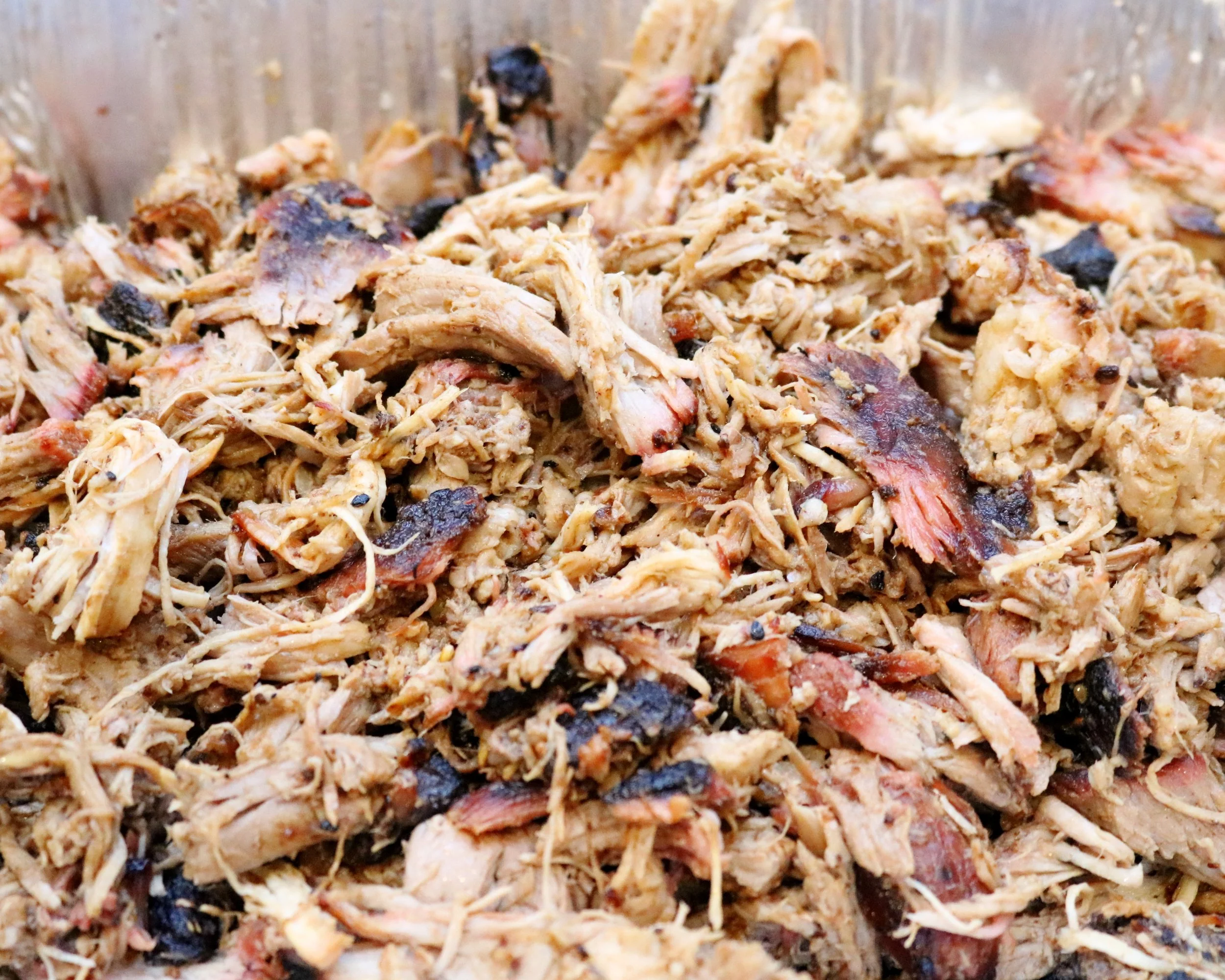McZ's Top Tools for Grilling & Smoking

Becoming a backyard pitmaster takes practice, patience, research, and the right tools. To get you started in the right direction, we’ve compiled this list of our favorite tools (that we actually use weekly) for grilling and smoking.
Grills & Smokers
Char-Griller Akorn Kamado Kooker
This grill, smoker, and pizza oven is our work horse. If you want to get into smoking, but only have room for one outdoor cooking apparatus (or don’t want to look like crazy BBQ folks like us), we’d recommend this one. We have used it multiple times a week for the past two years. It’s not as pretty and shiny as it once was, but it still works wonderfully. We’ve smoked multiple Thanksgiving turkeys on it (and likely will again this year), cooked dozens of pizzas, and hauled it to BBQ competitions. The cast iron grate offers durability and provides a great sear and grill marks on whatever you’re cooking.
The Akorn is far less expensive than a similarly sized Big Green Egg and weighs much less since the Akorn is made from steel as opposed to ceramic (FYI - we’re not knocking the BGE at all; we’ve heard great things about them). Bottom line, the versatility and price point of the Akorn, and the convenience of a cart/table surface next to the grill, have us singing its praises. Make sure to pick up the smoking stone as well (it doubles as a pizza stone)!
Pit Barrel Cooker
If you're interested in a barrel smoker, but would like the ability to easily clean and move the smoker, it doesn't get much easier than the Pit Barrel Cooker (PBC). It includes one removable grate and eight hooks with two rebar cross bars. This allows you to either hang the meat (such as about 6 racks of ribs at once), or cook food on the grate. The PBC temperature runs a bit higher than other smokers, resulting in quicker cooking times. We think it excels in cooking ribs and all cuts of chicken. This new model also has an enameled exterior for added durability (we still recommend using a grill cover, however). Finally, the customer support and tutorial videos offered by PBC are top notch.
Char-Griller Outlaw Charcoal Grill
When you’re hosting parties and trying to get a lot of sausages, wings, or veggies grilled at once, go for maximum volume. This Char-Griller charcoal grill has tons of space on the grill and convenient side tables. The grill surface is made of a series of smaller cast iron grates, making it easy to access the charcoal below as needed. As noted above with the Akorn, we love cast iron grates (rather than steel grates) for their durability, natural non-stick surface, and great grill marks.
You obviously won’t go wrong with a classic Weber Charcoal Grill either. They can be a little more expensive, particularly when choosing a larger size, and we’d still recommend choosing one with a cart for the most convenience.
Advanced Tools
Smoker Fan/Temperature Regulator
We know that we will lose some BBQ purists here, but this tool is absolutely worth the money. A temperature regulator for your smoker will eliminate at least 90% of the guesswork and frustration you may experience when jumping into this hobby. We only use the regulator with our Akorn, and generally only on longer smoking times (such as for pork shoulder, ribs, or larger cuts of poultry). There are a variety of options out there, but we use the PartyQ BBQ Temperature Controller from BBQ Guru. They make different versions of the PartyQ depending on the type of grill you have (such as the Akorn, Big Green Egg, or Weber Smokey Mountain).
To use the regulator, replace the lower vent cover with the cover included with the kit. Insert the regulator into the opening on the special vent cover and plug in the included temp probe. Light your charcoal, place your smoking stone (if using the Akorn) and grate on the grill, and clip the other end of the temp probe to the grate. Turn on the regulator and set the temp. Close the lid of the grill, crack the top vent a bit, and walk away until the regulator shows that the grill is at the desired temp. Keep in mind that it can take a little longer to get the smoker at the desired temp this way. If you’re in a hurry to start your food on the smoker, let the charcoal get going a bit on its own with the grill open before you insert the regulator into the vent cover.
Dual Probe Thermometer
If you’re not ready to jump to a temperature controller for your grill or smoker just yet, we’d highly recommend a dual probe thermometer. The temperature dials built into your grill are notoriously inaccurate (sometimes by as much as 100°F) and are not reflective of the temperature on the grate, so you really shouldn’t be relying on them when smoking. With a dual probe thermometer, one probe clips to the grate and the other is used for the food. By knowing the actual grate temperature, you can manually adjust the upper and lower vents on the grill to control the temperature. We have about three different dual probe thermometers at this point, and they all pretty much work the same. Each thermometer has lasted at least two years (and counting) and still read temperature accurately. Finally, these models each have a remote wireless transmitter that allows you to keep tabs on the smoker from inside your house (we’re all about convenience).
Basic Tools
Instant Read Thermometer
While we generally rely on our probe thermometer for internal food temps, it’s usually good to double check the meat in another spot before removing it from the grill. They make some fairly pricey ones, but we’d opt for inexpensive instant read thermometer (save your money for the dual probe thermometer):
Baking Sheets
The ever-versatile baking sheet. Perfect for carting things to and from the grill. Sure, you can buy them at retail shops or Amazon, but we think Webstaurant Store has the best prices around (less than $4 per half-sheet tray). If you buy them by the dozen, you’ll get a quantity discount.
Disposable Foil Trays
Right up there with baking sheets, we can never have enough foil trays for storing and serving grilled/smoked foods. As with the baking sheets, Webstaurant Store is a great resource for buying these in bulk (packs of 100 foil trays start at about $22).
Pit Mitts (aka Gloves)
There are so many varieties of heavy duty grill gloves out there and we probably have at least four different types. Select a style that fits your taste, keeping a few things in mind. Choose a glove that is (1) washable, (2) heat resistant up to at least 600°F, and (3) long enough to extend past your wrist by a few inches. Additionally, make sure the gloves have some type of anti-slip feature. Here are a few options we’d recommend:
We do not recommend silicone-only barbecue gloves. While they are very easy to clean, we have found that they typically don’t offer as much heat resistance.
Tongs
Can you ever have too many sets of tongs? Our preference is for locking tongs with silicone tips. Silicone is usually heat resistant up to at least 475°F, but if you’re worried about the silicone melting, just skip that feature. Make sure you have a variety of lengths. Longer tongs are important when the grill is running very hot.
Shredding Claws
At the risk of making Alton Brown upset, we strongly disagree with his characterization of meat shredding claws as a kitchen “unitasker.” These are super durable and easy to clean, make shredding a breeze, and are great for lifting meats to and from the grill. Large meat forks tend to impale the meat when they’re used to move meat to/from the grill - allowing all your precious juices to flow out. The shredding claws provide better stability and keep the juices where they belong (in the meat!).
Charcoal
Depending on which grill we’re using, we either use traditional briquettes or hardwood lump charcoal. Whatever brand you choose, please do NOT use any charcoal pre-loaded with lighter fluid (i.e. instant charcoal). We think it leaves a nasty, lingering flavor in all your food. Here’s what we usually buy:
Hardwood Chunks
In our experience, the brand of hardwood chunks you use doesn’t really matter. We usually just re-stock while we’re at the grocery store. We prefer to use chunks over wood chips because they last longer in the smoker. Choose a mild wood such as apple, pecan, or cherry wood. We think mesquite and hickory can be overwhelming - if you’re using those woods, we suggest using a very small amount.
Fire Starters
Back away from the lighter fluid. Did we say that already? It’s worth repeating again. Back away from the lighter fluid. Use a chimney starter or a natural composite starter to light your charcoal instead. We typically just pile the charcoal into the smoker, set a composite block starter on top, and light it.
Did we miss anything? Comment below with your must-have BBQ tools!





